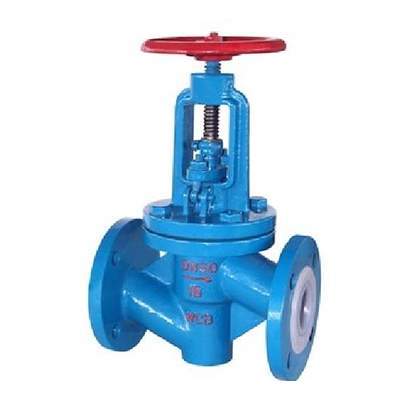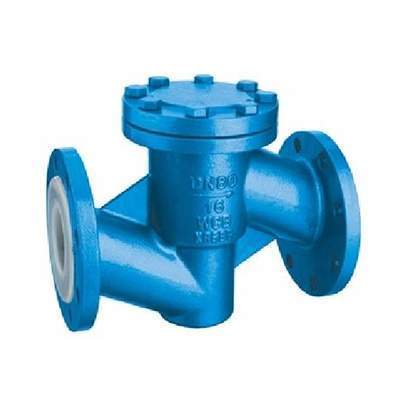Welcome to My Blog!
Before we dive into the content, I’d love for you to join me on my social media platforms where I share more insights, engage with the community, and post updates. Here’s how you can connect with me:
Facebook:https://www.facebook.com/profile.php?id=61563865935136
Now, let’s get started on our journey together. I hope you find the content here insightful, engaging, and valuable.
Introduction

In the demanding landscape of industrial applications, where corrosive fluids and harsh environments are commonplace, the selection of reliable and durable valve solutions is paramount. The Fluorine Lined Gate Valve stands as a testament to engineering excellence, offering exceptional resistance to chemical attack and ensuring long-term operational efficiency. This comprehensive guide delves into the intricacies of Fluorine Lined Gate Valves, exploring their design, applications, advantages, and best practices for optimal utilization. Selecting the right valve can significantly reduce downtime and maintenance costs. Proper material selection ensures long-term system integrity.
Understanding Fluorine Lined Gate Valves
A Fluorine Lined Gate Valve is a type of industrial valve designed to control the flow of fluids in pipelines. What sets it apart is its internal lining, typically made of fluoropolymers such as PTFE (Polytetrafluoroethylene), PFA (Perfluoroalkoxy), or FEP (Fluorinated Ethylene Propylene). These fluoropolymers exhibit remarkable chemical inertness, making them ideal for handling aggressive substances. The core structure of the valve, usually constructed from ductile iron or carbon steel, provides the necessary mechanical strength, while the Fluorine lining safeguards it from corrosion. The design optimizes flow control while providing a barrier against harsh chemicals. This specific valve type is a crucial component in many critical industrial processes.
Key Components and Design Features of Fluorine Lined Gate Valve
- Valve Body: The primary structural component, providing the pressure boundary and housing the internal mechanism. It withstands the operational pressures and supports the internal components.
- Gate: A wedge-shaped or parallel-sided element that moves perpendicularly to the flow path to control fluid passage. The gate’s design ensures a tight seal when closed.
- Stem: Connects the gate to the actuator, transmitting the necessary force for opening and closing. The stem must be robust enough to handle the operating torque.
- Bonnet: The top cover of the valve, providing a leak-tight seal and supporting the stem. It also allows for easy access to internal parts for maintenance.
- Fluorine Lining: The protective inner layer, ensuring chemical resistance and preventing corrosion. This lining is crucial for the valve’s longevity in corrosive environments.
Materials Used in Fluorine Lined Gate Valve Construction
The selection of materials is critical to the performance and longevity of a Fluorine Lined Gate Valve.
-
Lining Materials:
- PTFE: Offers excellent chemical resistance and a wide temperature range. It is suitable for a broad spectrum of applications.
- PFA: Provides superior high-temperature performance and enhanced mechanical strength. PFA is often used in more demanding thermal environments.
- FEP: Exhibits excellent flexibility and low permeability. FEP is a good choice for applications requiring flexibility.
-
Body Materials:
- Ductile Iron: Offers high strength and good corrosion resistance. This material is cost-effective for many applications.
- Carbon Steel: Provides excellent mechanical properties and cost-effectiveness. It is commonly used where high strength is required.
- Stainless Steel: used in extremely corrosive enviroments. This provides the highest level of corrosion protection.
Applications of Fluorine Lined Gate Valves
Fluorine Lined Gate Valves find widespread use in various industries where corrosive fluids are encountered.
- Chemical Processing: Handling acids, alkalis, and other aggressive chemicals. These valves are essential for maintaining safe and efficient operations.
- Pharmaceuticals: Ensuring contamination-free transfer of sensitive fluids. The integrity of the product is paramount in this industry.
- Pulp and Paper: Managing bleaching agents and other corrosive solutions. These valves help maintain the integrity of the processing equipment.
- Water Treatment: Controlling the flow of corrosive water treatment chemicals. They ensure precise dosing and prevent equipment damage.
- Mining: Handling corrosive slurries and leaching solutions. The robust design is crucial in the harsh mining environment.
Advantages of Using Fluorine Lined Gate Valves
- Exceptional Chemical Resistance: Fluoropolymers are highly resistant to a broad range of chemicals. This ensures reliability in diverse applications.
- Corrosion Protection: The Fluorine lining effectively shields the valve body from corrosive attack. It extends the valve’s lifespan and reduces replacement costs.
- Low Friction: The smooth surface of Fluorine materials reduces friction and pressure drop. This contributes to energy efficiency.
- Long Service Life: The combination of robust construction and chemical resistance ensures extended operational lifespan. This translates to lower long term costs.
- Minimal Maintenance: The non-stick properties of Fluorine reduce the buildup of deposits, minimizing maintenance requirements. This reduces downtime and labor costs.
Technical Specifications of Fluorine Lined Gate Valve
Here’s a table outlining typical technical specifications:
| Specification | Detail |
|---|---|
| Nominal Diameter | 1″ to 24″ (or as required) |
| Pressure Rating | ANSI 150, 300, or as per application needs |
| Temperature Rating | -20°C to 200°C (depending on lining material) |
| Lining Material | PTFE, PFA, FEP |
| Body Material | Ductile Iron, Carbon Steel, Stainless Steel |
| End Connection | Flanged, Threaded |
| Operation | Manual, Electric, Pneumatic |
Factors to Consider When Selecting a Fluorine Lined Gate Valve

- Chemical Compatibility: Ensure the lining material iscompatible with the process fluid. Incompatibility can lead to premature failure.
- Temperature and Pressure Ratings: Select a valve that can withstand the operating conditions. Exceeding these ratings can cause damage.
- Valve Size and End Connections: Choose a valve that fits the pipeline dimensions. Proper sizing is critical for efficient flow.
- Actuation Type: Determine the appropriate actuation method (manual, electric, or pneumatic). The choice depends on the application’s requirements.
- Industry Standards: Ensure the valve complies with relevant industry standards. Compliance ensures safety and reliability.
Conclusion
Fluorine Lined Gate Valves are indispensable assets in industries dealing with corrosive fluids. Their robust design, coupled with the exceptional chemical resistance of Fluorine linings, ensures reliable and long-lasting performance. By understanding their design, applications, and best practices, industries can effectively leverage these valves to enhance operational efficiency and safety. Investing in the right valves can lead to significant savings.
FAQ
Q: What are the primary advantages of a Fluorine Lined Gate Valve?
A: Exceptional chemical resistance, corrosion protection, and long service life. These advantages provide long term value.
Q: In what industries are Fluorine Lined Gate Valves commonly used?
A: Chemical processing, pharmaceuticals, pulp and paper, water treatment, and mining. These industries rely on their robust nature.
Q: What materials are typically used for the lining of these valves?
A: PTFE, PFA, and FEP. Each material has unique properties.
